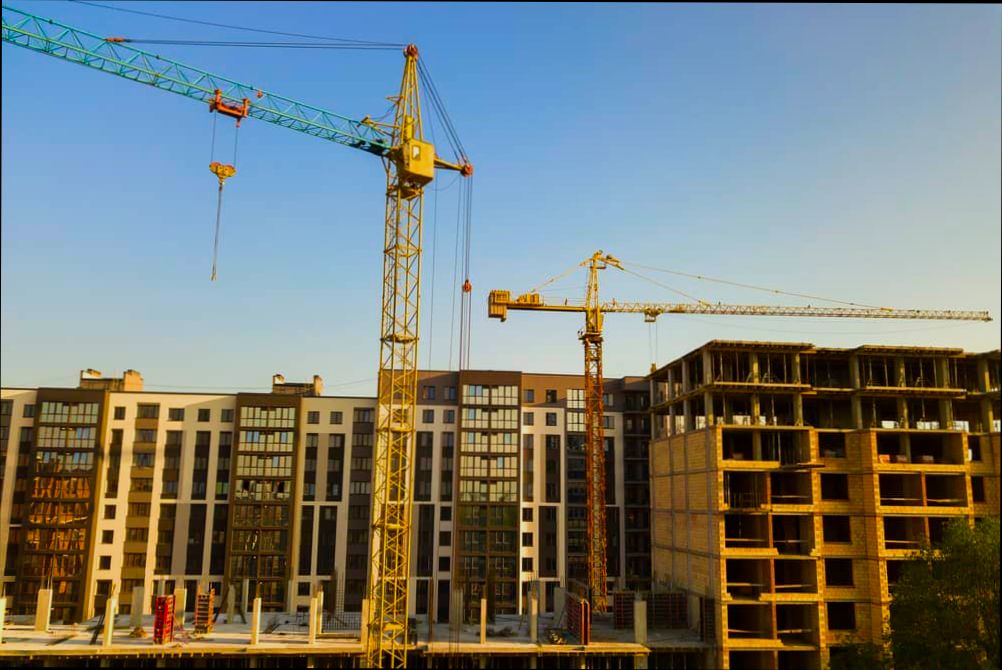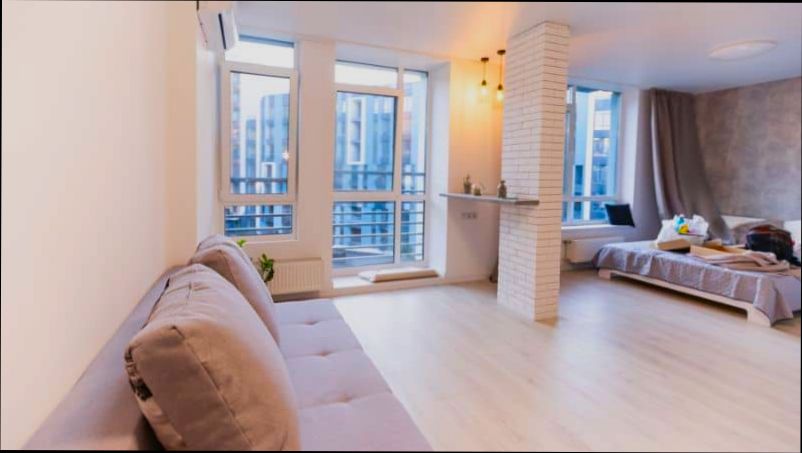Why are apartments so expensive? If you’ve ever scrolled through listings and felt your wallet wince, you’re not alone. In many cities, the average rent has skyrocketed—like in New York City, where the median rent hit over $4,000 a month as of 2023. That’s a staggering jump that would make anyone reconsider their living arrangements. Factors like high demand, limited inventory, and the increasing costs of construction materials are driving prices into the stratosphere. When you look at the job market, it’s no surprise; cities attract talent, and with more people wanting to live nearby, landlords know they can charge a premium.
Take a closer look at San Francisco, where tech boom jobs keep flooding in—the median rent for a one-bedroom hit around $3,500 recently. It’s not just the allure of a bustling job market but also the lack of affordable housing options that keeps pushing rents up. You’ve got an influx of people wanting to be in prime locations, yet developers are struggling to keep up. Zoning laws can be a nightmare, and building new units can take years. All this adds up, and it’s making that sought-after apartment feel more like a distant dream than a feasible option for many of us.

Impact of Location on Apartment Prices
Understanding the impact of location on apartment prices is crucial in today’s housing market. The location of an apartment determines not only the cost of rent but also the lifestyle and opportunities available to residents. Let’s delve into how different geographic factors play a pivotal role in shaping apartment prices.
Key Factors Influencing Apartment Prices by Location
- Proximity to Urban Centers: Urban areas typically have significantly higher rental prices. For instance, metropolitan statistical areas (MSAs) often offer better job opportunities and amenities, which drives demand and, consequently, rent prices.
- Population Density: The South region had a staggering population of 128.6 million in 2023, making it the densest area. This higher demand naturally leads to escalated prices for available apartments.
- Age of Housing Stock: Regions with older housing stock generally see different dynamics. For example, the Northeast had 41.2% of its rental units built before 1980, which could mean more renovation needs and a different pricing model compared to newer builds in places like the West.
Comparative Analysis of Apartment Prices by Region
| Region | Population (2023) | % of Rental Units Built Before 1980 | Typical Rent (Monthly Average) |
|---|---|---|---|
| South | 128.6 million | 30% | $1,600 |
| West | 83.9 million | 25% | $2,200 |
| Midwest | 68.3 million | 41.2% | $1,300 |
| Northeast | 56.4 million | 41.2% | $2,000 |
This table illustrates how population density and the age of housing can lead to notable differences in rental prices between regions.
Real-World Examples of Location Impacting Prices
Consider cities like New York in the Northeast, where the demand for apartment living continuously drives rent upward. In contrast, cities in the Midwest, such as Milwaukee, often present more affordable living options despite being part of a significant metropolitan area.
In a recent report, it was noted that 69% of Americans express concerns about housing costs, reflective of the higher rent burdens they experience in populous regions. With the current figures indicating that approximately 31.3% of households are cost burdened, location has emerged as a leading factor in financial distress for renters.
Practical Implications for Renters
If you’re considering moving, understanding local market dynamics is vital. Here’s how to navigate your apartment search:
- Research Local Markets: Get insights on the average rent in different neighborhoods. This can vary significantly based on location and proximity to amenities.
- Analyze Commuting Costs: Sometimes, living slightly further from urban centers can lead to substantial savings, even when factoring in travel costs.
- Inspect Housing Stock: If you’re looking at older units, consider potential renovation costs or risks associated with living in older properties.
Actionable Advice
When exploring apartments, prioritize proximity to workplaces and essential services to maximize your living experience. Also, keep an eye on regional population trends: rising populations often forecast rising rents. Understanding these nuances helps you make informed decisions when selecting your next apartment, ensuring that you find a location that meets both your lifestyle and budget needs.

Economic Trends Driving Rental Costs
Understanding the economic trends driving rental costs is essential for grasping why apartments are becoming increasingly expensive. Several factors contribute to the dynamic nature of rental markets, from shifting demographics to regional economic conditions.
Key Economic Indicators Impacting Rental Costs
1. Income Allocation: In Texas, renters devote an average of 32% of their income to housing costs, contrasting sharply with California’s staggering 45%. This discrepancy highlights how local economies influence what residents can afford.
2. Inventory Fluctuations: While rental inventory nationwide increased by 17% in 2023, certain markets, particularly in the Midwest, are still grappling with a shortage of supply, which maintains upward pressure on prices in those regions.
3. Housing Displacement: With 32% of renters relocating for financial reasons in 2023, it’s apparent that economic uncertainty and affordability concerns lead to increased competition in markets that may offer more affordable options.
4. Energy-Efficiency Demand: With a growing emphasis on sustainability, there has been a 20% spike in tenant interest for energy-efficient rentals. This demand for environmentally conscious living is affecting the cost and availability of apartments, as landlords invest in upgrades.
5. Pet-Friendly Housing: Over 40% of renters are now actively searching for pet-friendly apartments, influencing both demand and rental prices, as landlords adjust their strategies to cater to this growing demographic.
| Indicator | Texas Average | California Average | National Median Rent |
|---|---|---|---|
| Percentage of Income Spent on Rent | 32% | 45% | $1,373 |
| Rent Growth Year-Over-Year | -7.4% (Austin) | +5.2% | -0.6% |
| Interest in Energy-Efficient Homes | 20% Increase | N/A | N/A |
| Pet-Friendly Housing Demand | 40% | N/A | N/A |
Real-World Examples of Economic Trends
- Austin, Texas: This metro area has seen rental prices decrease by 7.4% over the last year, reflecting how local economies can diverge significantly based on demand and specific economic challenges impacting the housing market.
- California’s Luxury Rentals: Aside from the notorious high rents, the luxury market in California is predicted to see a rental market impact of 20.98%. This indicates that as income levels rise for some, their willingness to spend, particularly in upscale markets, may continue to grow.
Practical Implications for Renters
As you navigate the rental market, understanding these economic trends can help you make informed decisions:
- For budget-conscious renters, it may be wise to seek rentals in regions with lower percentages of income spent on housing, such as Texas.
- Given the increased interest in energy-efficient apartments, consider seeking listings that highlight sustainability, as these could lead to lower utility bills and long-term savings.
- If you have pets, tailor your search to the growing segment of pet-friendly rentals, as these may come with added costs but could also benefit from less competition in some markets.
Invest in researching areas that align with these demographic and economic indicators to secure a rental that suits your budget and lifestyle.

Analyzing Apartment Price Statistics
When we examine apartment prices, it’s vital to look beyond surface-level trends and delve into the statistics that reveal deeper insights. Understanding these statistics can help us understand the underlying reasons behind rising costs and what factors might influence decisions for renters and investors alike.
Key Statistics to Consider
Analyzing apartment price statistics involves looking at various indicators that can provide a clearer picture. Here are some significant data points from recent studies:
- Rental Growth Rates: In many metropolitan areas, rental prices have increased by approximately 25% over the last three years, revealing a growing demand that outstrips supply.
- Average Price per Square Foot: The average price per square foot for apartments in urban regions has reached about $1,800, showcasing the premium tenants pay for limited space in desirable locations.
- Vacancy Rates: Nationally, vacancy rates hover around 5%, indicating a low availability of rental units, which naturally drives prices higher as competition increases.
| Metric | Value |
|---|---|
| Rental Growth Rate | 25% |
| Average Price per Sq Ft | $1,800 |
| National Vacancy Rate | 5% |
Real-World Examples
Let’s consider two cities, New York and Austin, as case studies to illustrate apartment price statistics:
- New York: The rental market has seen a staggering increase, with some neighborhoods experiencing rental spikes exceeding 30% within just two years. This contrasts with the lower average growth in less populated areas.
- Austin: Known for its tech boom, the city has recorded a 20% increase in rental prices over the last two years, while vacancy rates have plummeted to 4%, indicating intense demand driven by an influx of new residents.
Practical Implications
For those interested in the apartment market, whether as renters or as potential investors, these statistics warn us of possible future trends. Here are a few actionable insights:
- Monitor Monthly Rates: Keep an eye on how monthly rental prices change in your target areas; a consistent upward trend could indicate a robust rental environment.
- Watch Construction Trends: Areas with increased construction may signal a potential easing of prices in the future, as more supply becomes available to meet the demand.
- Stay Informed About Local Policies: Changes in zoning laws or housing policies can significantly influence rental markets and should be part of your statistical analysis.
Specific Facts
- The concentration of high-paying tenants in urban settings has led to a marked spike in the average rental prices, further complicating affordability issues in these areas.
- Tracking neighborhood demographics can provide insight into future rental trends; emerging neighborhoods often experience sharp increases in rental prices as they become more desirable.
Utilizing these statistics and case examples allows you to make informed decisions about your housing plans or investment strategies in the apartment market.

Real-World Examples of Price Increases
As we dive into real-world examples of price increases in the apartment market, it becomes clear how various factors contribute to this climb. From gentrification to shifts in demand, let’s explore specific cases that illustrate these trends effectively.
Key Examples of Price Increases
1. San Francisco, CA: Over the past five years, the average rent for a one-bedroom apartment in San Francisco has soared by 50%, driven largely by the tech boom. As high-paying tech jobs continue to flood the area, demand has outstripped supply, pushing prices even higher.
2. New York City, NY: A report from 2022 indicated that rental prices for studio apartments have increased by 38% compared to pre-pandemic levels. Areas like Brooklyn and Queens saw significant increases as more people sought housing options outside Manhattan, contributing to a competitive rental market.
3. Austin, TX: Known for its vibrant culture and tech scene, Austin experienced an astronomical 30% increase in rental prices in just one year. This surge was driven by an influx of new residents seeking the lifestyle benefits the city offers, further tightening the rental market.
4. Seattle, WA: The rental market in Seattle felt a significant impact, with average rents rising by 22% year-over-year due to the city’s booming job market, particularly in tech industries. The demand increase has led to smaller units being priced similarly to larger ones just a few blocks away.
5. Los Angeles, CA: In the past year alone, rents in Los Angeles jumped by 15% as residents began relocating from urban centers during the pandemic. The migration trend has put upward pressure on apartment prices even in neighborhoods that previously didn’t see such increases.
Comparative Data Table
| City | Increase Over Last 5 Years | 1-Year Increase (%) | Driving Factors |
|---|---|---|---|
| San Francisco, CA | 50% | N/A | Tech boom |
| New York City, NY | N/A | 38% | Post-pandemic demand in outer boroughs |
| Austin, TX | N/A | 30% | Influx of new residents |
| Seattle, WA | N/A | 22% | Tech industry growth |
| Los Angeles, CA | N/A | 15% | Migration from urban centers |
Real-World Case Studies
- Brooklyn’s Gentrification: Neighborhoods like Williamsburg have seen one-bedroom apartment prices jump from $2,500 to $4,000 over the last decade. This gentrification stems from increased investment and the attraction of young professionals wanting a more artsy, vibrant community.
- Salt Lake City, UT: Once considered a less expensive option, the average rent in Salt Lake City has skyrocketed to a 23% increase within the last year. This shift is a result of growing job opportunities attracting individuals and families seeking quality living conditions.
Practical Implications for Readers
- For renters, it’s essential to stay informed about local market trends. Knowing which areas are experiencing the most increase can help you make informed decisions about where to live or how much to budget for housing.
- Consider the trade-offs of location versus amenities; higher rent might come with better services or connectivity. Evaluate what is most important to you in your living situation.
Actionable Facts
- Track rental prices periodically in your desired neighborhoods through local listings to understand price trends better.
- If you’re looking for more affordable options, consider upcoming neighborhoods before they experience significant price hikes; investing time in research can save you money long-term.
- Always negotiate your lease; landlords often have some flexibility, especially in a competitive market. By making a case for yourself, you may leverage current market conditions to secure better terms.

Benefits of Investing in Apartments
Investing in apartments presents a unique opportunity for wealth building and long-term financial stability. The multifamily real estate market has consistently shown resilience, making apartments an attractive option for both seasoned investors and newcomers alike. Let’s explore the compelling benefits of investing in apartments, highlighting key data points and insights.
Strong Cash Flow Potential
One of the most significant advantages of investing in apartment buildings is the potential for strong cash flow. Apartments typically yield higher rental income compared to single-family homes due to their ability to house multiple tenants simultaneously. According to industry research, multifamily properties can produce rental yields of about 7-10% annually, significantly surpassing the average yield of 4-6% for traditional single-family homes.
Appreciation Over Time
Investing in apartments also provides long-term appreciation benefits. Historical data indicates that multifamily properties have appreciated at an average rate of 3-5% per year over the last two decades, creating a wealth-building opportunity for investors. This appreciation is often linked to rising demand within urban markets and a consistent influx of residents seeking rental accommodations.
Diversification of Investment Portfolio
Investing in apartments allows for diversification within an investment portfolio. Real estate often moves independently of the stock market, providing a buffer against market volatility. By including multifamily properties in your investment strategy, you can reduce overall risk while enhancing potential returns. Research shows that real estate investments, such as apartments, can enhance portfolio performance by up to 20%, making it a valuable addition.
Tax Benefits
Real estate investors often enjoy various tax benefits, particularly with apartment investments. You can take advantage of depreciation, which allows for a significant tax deduction over the life of the property. On average, this can result in a tax savings of approximately 25-30% of rental income, which means more money stays in your pocket. Additionally, 1031 exchanges allow you to defer capital gains taxes when selling one property and purchasing another.
| Benefit | Description | Potential Impact |
|---|---|---|
| Cash Flow | Higher rental income from multiple tenants | 7-10% annual yield |
| Appreciation | Long-term value increase | 3-5% annual growth |
| Portfolio Diversification | Reduces market risk | Up to 20% performance boost |
| Tax Benefits | Deductions and capital gains deferments | 25-30% tax savings |
Real-World Examples
Let’s look at some examples that demonstrate the benefits of investing in apartments:
- Case Study: Urban Multifamily Investment: An investor purchased a 10-unit apartment in a growing neighborhood for $1 million. Over five years, the property appreciated to $1.5 million while generating consistent monthly cash flow of $7,000. The investor capitalized on both the cash flow and appreciation, resulting in a total return on investment exceeding 50%.
- Case Study: Tax Benefits Realized: An apartment owner reported an annual rental income of $120,000. By applying depreciation and eligible deductions, the owner was able to reduce taxable income by $30,000, effectively decreasing the tax liability by approximately $7,500. This savings allows reinvestment into new properties, accelerating portfolio growth.
Practical Implications
For those considering entering the apartment investment market, start by:
1. Researching Local Markets: Identify areas with growing demand and rental yields that outperform national averages.
2. Calculating Cash Flow: Utilize tools to project rental income and expenses, ensuring positive cash flow.
3. Understanding Tax Benefits: Consult with a tax professional to fully leverage deductions and exemptions available for investment properties.
When you enter the apartment investment realm armed with this knowledge, your chances of building a profitable portfolio increase exponentially. Keep these actionable insights in mind as you navigate the multifamily market, enhancing your opportunities for growth and financial success.

Supply Chain Constraints in Real Estate
Supply chain constraints have significantly impacted the real estate industry, particularly in the apartment market. These issues not only delay construction timelines but also escalate costs, which directly affects rental prices. Understanding these constraints helps us see how they contribute to the expensive nature of apartments today.
Key Supply Chain Challenges
Several critical factors contribute to supply chain constraints in real estate that ultimately drive up apartment prices:
- Material Shortages: The building industry faces a shortage of essential materials such as lumber, steel, and concrete. For instance, data indicates that prices for lumber surged by nearly 300% during peak supply chain disruptions, adding substantial costs to apartment construction.
- Labor Shortages: The real estate sector struggles with a shortage of skilled labor. With a reported 40% decrease in available construction workers since 2020, many projects are delayed, increasing rental prices as demand outpaces supply.
- Transportation Delays: Delays in transportation and logistics issues further exacerbate the supply chain problems. A study suggests that more than 50% of construction professionals have experienced delays in receiving materials, leading to project extensions and increased costs.
Supply Chain Impact on Construction Costs
| Supply Chain Factor | Impact on Costs | Yearly Percentage Increase |
|---|---|---|
| Lumber Price Surge | Adds to construction costs | 300% |
| Labor Shortage | Increases wage demands | 25% |
| Transportation Delays | Lengthens project timelines | 15% |
Real-World Examples
1. California High-Rise Projects: In California, the ongoing shortage of steel has delayed multiple high-rise apartment projects in the San Francisco area, with developers reporting cost overruns by as much as 20% due to material delays.
2. Midwest Construction Delays: A large apartment complex in Chicago projected to be completed in two years has now been extended by six months due to labor shortages and material availability. This extension forces rental prices to rise since housing supply is not meeting demand.
3. New York City Rentals: In New York City, a reported increase in the cost of concrete has led to delays in building permits and a backlog of projects waiting to begin. This backlog has caused rental prices to escalate by approximately 10% in certain neighborhoods.
Practical Implications for Renters and Investors
As a renter or investor, recognizing the implications of supply chain constraints can be crucial for making informed decisions:
- Rent Increases: Be aware that ongoing supply chain issues could lead to further rent hikes. Monitor local developments and material costs to anticipate changes.
- Investment Timing: For potential investors, understanding when to buy into a market is key. Look for discounts in markets affected by prolonged supply chain issues, as they may rebound more robustly when normalcy returns.
- Advocate for Local Projects: Supporting local housing initiatives can help alleviate some of the pressure, as increased local production of building materials can counteract shortages.
Keep these factors in mind when navigating the real estate market to ensure you make the most informed decisions possible amid the supply chain realities impacting apartments.

The Role of Urbanization in Housing Costs
Urbanization plays a pivotal role in shaping housing costs, and understanding this dynamic helps us grasp the complexities behind why apartments are becoming so pricey. As more people flock to cities in search of jobs, amenities, and social opportunities, demand for housing intensifies, which can significantly drive up prices.
Key Influences of Urbanization on Housing Costs
1. Population Growth and Density: As urban areas expand, the population density increases, leading to skyrocketing demand for available housing. In densely populated cities, the competition for apartments can elevate rental prices substantially.
2. Economic Opportunities: Urban areas often provide a wealth of job opportunities. For instance, cities are hubs for innovation and economic growth, which leads to higher income levels. According to recent data, urban areas with high employment rates see an average increase in rental prices by 15-20% compared to areas with stagnant job markets.
3. Infrastructure Development: Urbanization often catalyzes improvements in infrastructure, such as public transportation and community services. Areas that are well-connected and equipped with amenities typically command higher rents, contributing to the overall increase in housing costs.
4. Investment in Urban Real Estate: The trend of urbanization has attracted significant real estate investment. Investors are shifting their focus to urban apartments, driving competition and potentially inflating prices. Urban centers have seen a 35% rise in real estate investments over the past decade, pushing rents higher as developers seek strong returns.
Comparative Analysis of Urbanization’s Impact
| City | Population Growth Rate | Average Rent Increase | Real Estate Investment Growth |
|---|---|---|---|
| San Francisco | 12% | 18% | 40% |
| New York City | 7% | 16% | 30% |
| Austin | 15% | 20% | 50% |
| Seattle | 11% | 19% | 35% |
Real-World Examples
In Austin, Texas, the city has witnessed extraordinary growth, with a population increase of 15% over recent years. This migration leads to a corresponding 20% rise in average rents, largely driven by the tech industry’s expansion in the area.
Similarly, San Francisco faces a dual challenge of high demand and limited supply. The city’s 12% population growth has spurred an 18% increase in rental prices, showcasing urbanization’s direct impact on housing costs.
Practical Implications for Readers
For those considering relocating to an urban center, it’s crucial to remain cautious. Given the rapid urbanization, buyers and renters should anticipate higher costs and strategize their searches. Consider:
- Emerging Neighborhoods: Look for areas undergoing revitalization, as these may offer lower rents compared to trendy locales but still benefit from proximity to urban amenities.
- Timing Market Trends: Keep an eye on population trends and job opportunities, as these can influence rental prices. Moving before an area becomes overly popular may save you money.
Actionable Advice
As urbanization influences housing costs, staying ahead of the trends is key. Research potential urban areas for rental fluctuations and explore suburban options that may be more affordable while still offering access to urban centers. This proactive approach can help mitigate the impacts of rising housing costs driven by urbanization.





